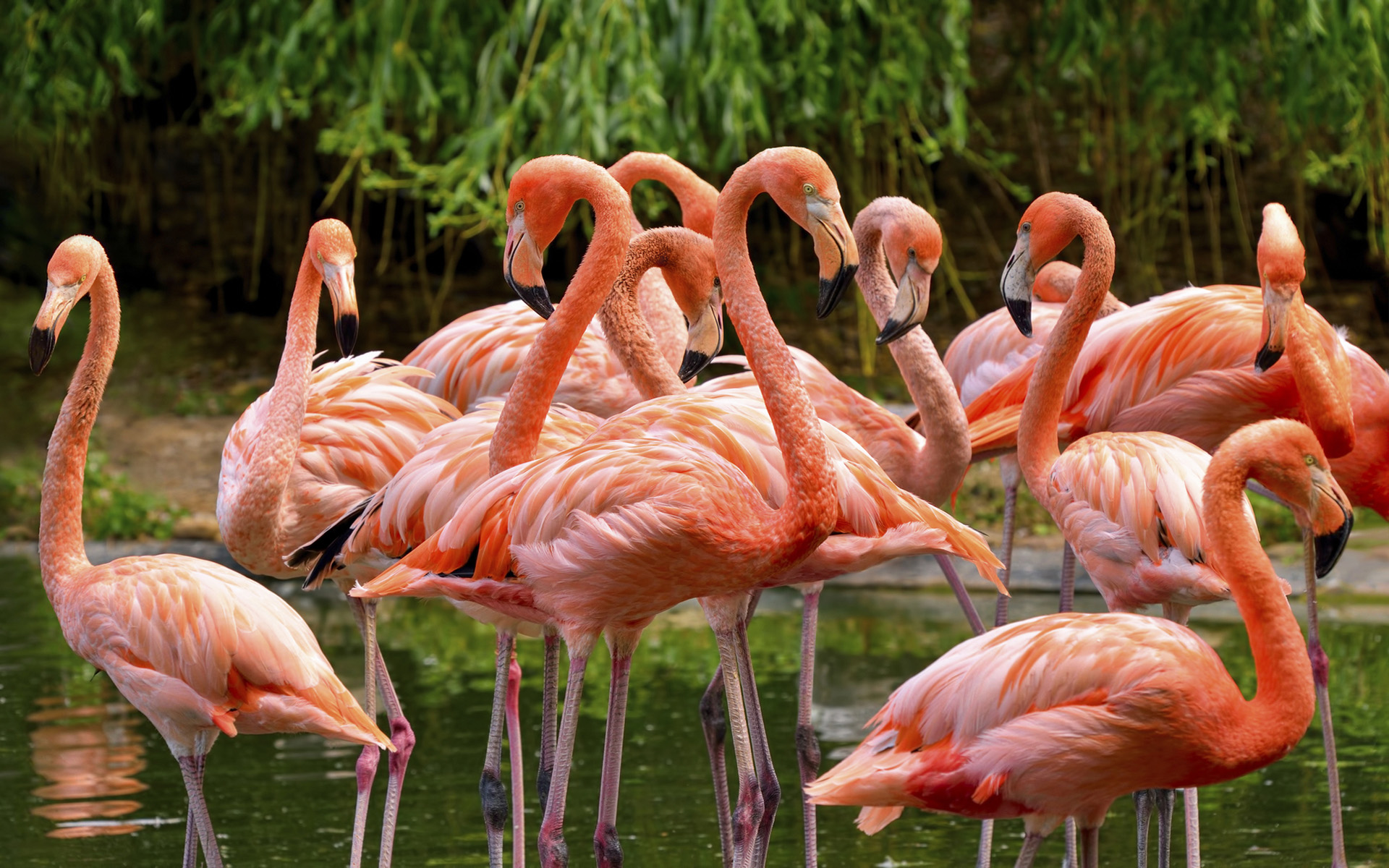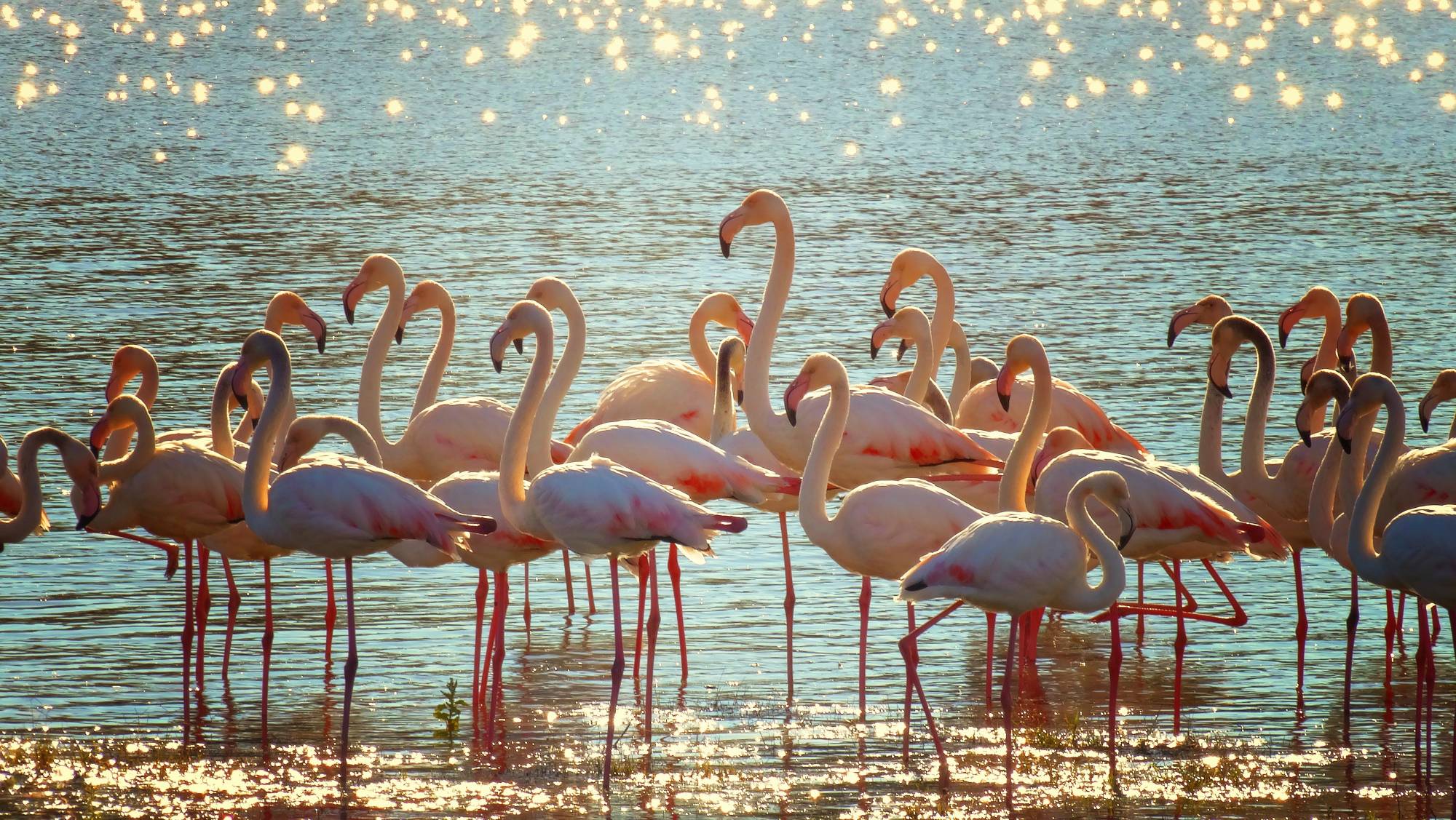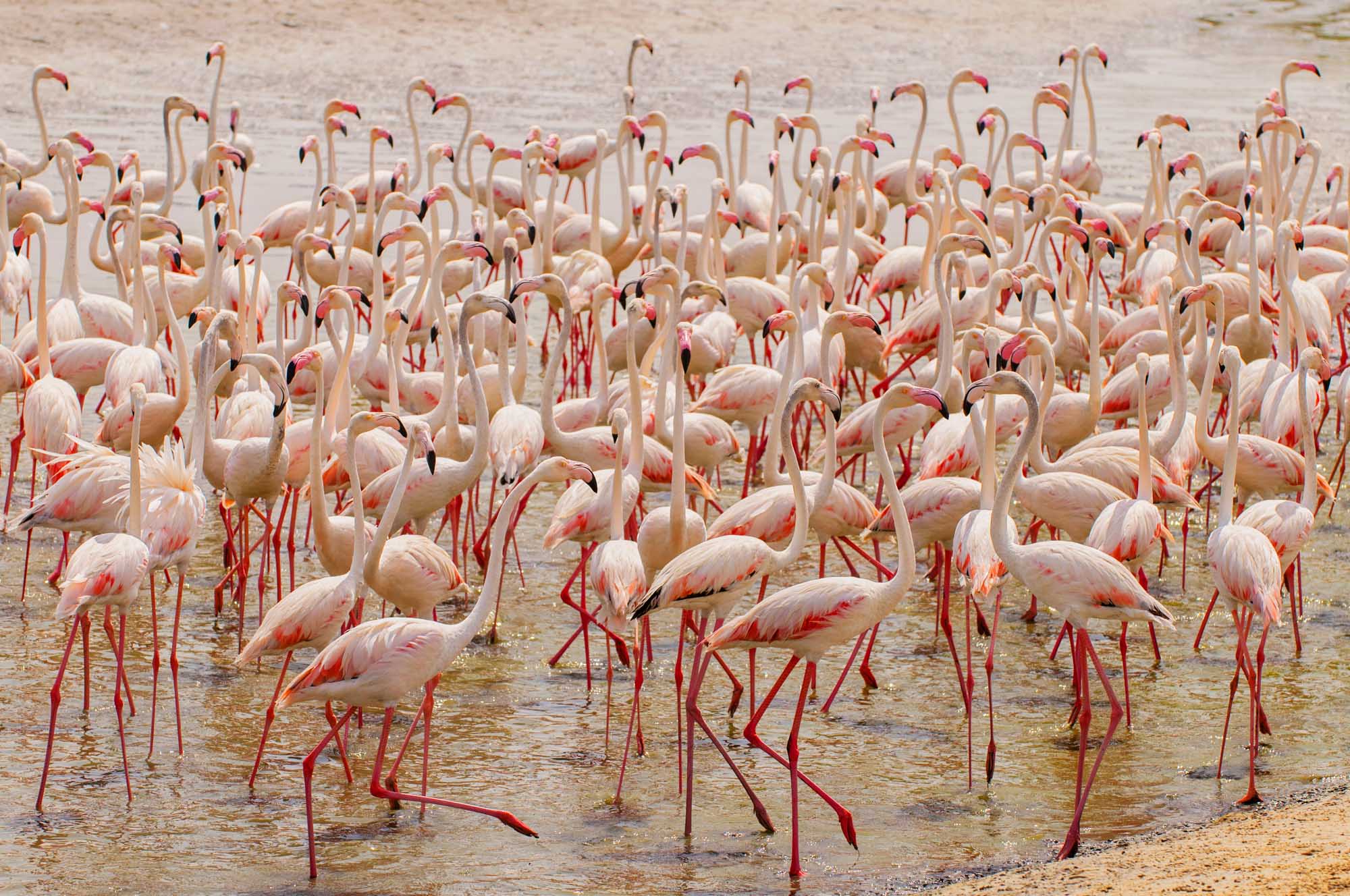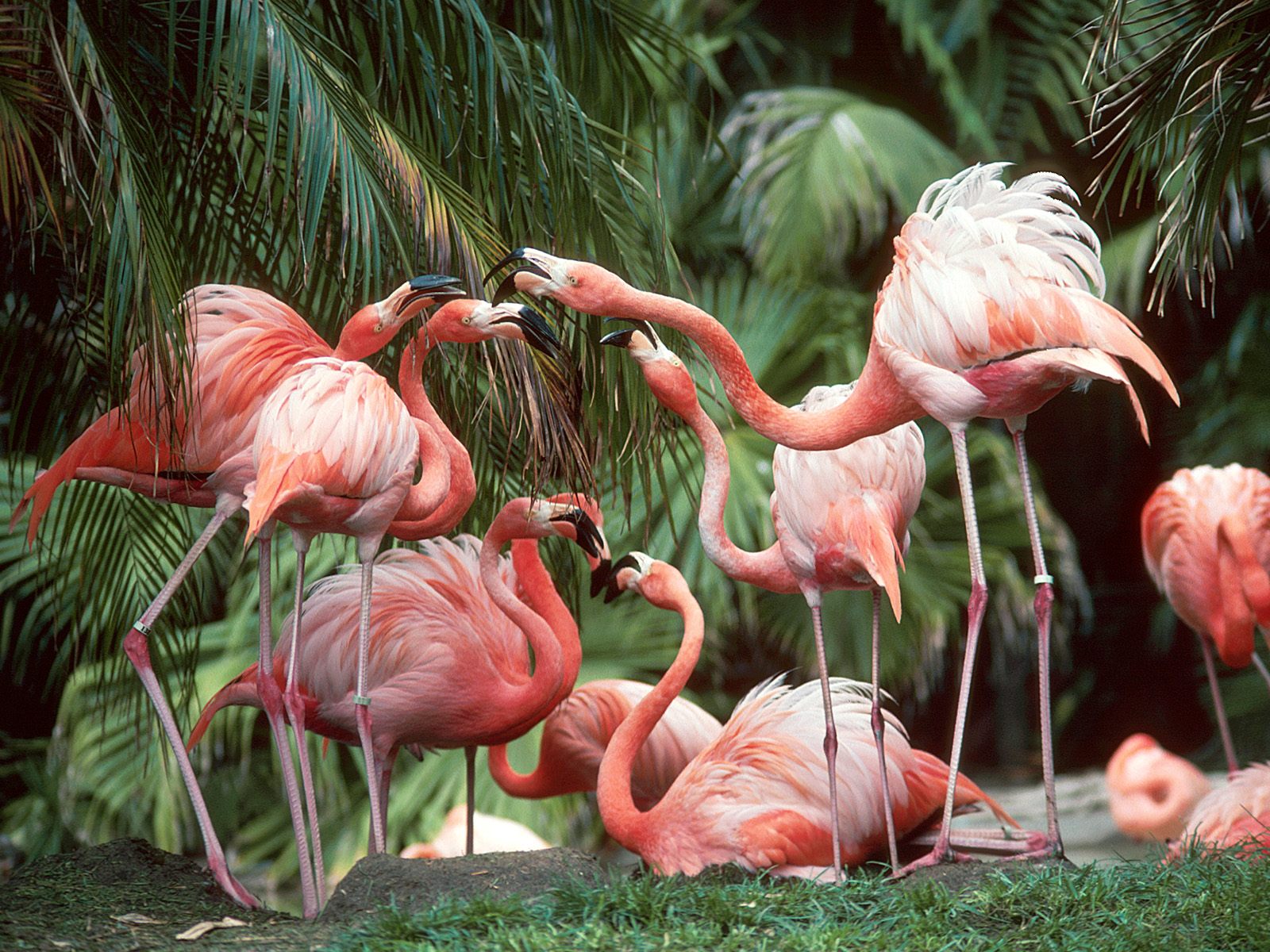
Flamingos, with their striking pink plumage and graceful long legs, are among the most recognizable and beloved birds in the world. These elegant creatures, often seen wading through shallow waters, are a marvel of nature both in appearance and behavior.
Unique Characteristics
The vibrant pink color of flamingos comes from their diet, which is rich in carotenoid pigments found in the algae and crustaceans they consume. These pigments are metabolized and deposited in the feathers, skin, and beak, giving flamingos their signature hue. Interestingly, flamingo chicks are born with gray feathers, which gradually turn pink as they mature.

Habitat and Behavior
Flamingos inhabit shallow lakes, lagoons, and mangrove swamps, primarily in tropical and subtropical regions. They are highly social birds, often living in large colonies that can number in the thousands. This social structure helps them with feeding, breeding, and protection from predators.

Feeding Habits
Flamingos have a unique method of feeding. They use their specialized beaks to filter-feed on small organisms in the water. By holding their beaks upside down in the water, they pump water through comb-like structures called lamellae, trapping algae, crustaceans, and other small food particles.

Conservation
While flamingos are widespread, certain species face threats from habitat loss, pollution, and climate change. Conservation efforts are crucial to protect these birds and their habitats. Many flamingo habitats are now designated as protected areas, ensuring these stunning birds continue to grace our planet.

Flamingos are more than just a beautiful sight; they are a vital part of the ecosystem, playing a significant role in their habitats. Their presence is a reminder of the incredible diversity and complexity of the natural world. Whether admired in the wild or at a sanctuary, flamingos never fail to captivate and inspire awe.










